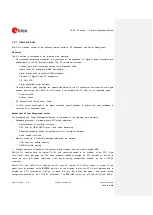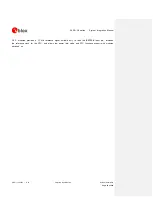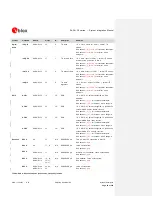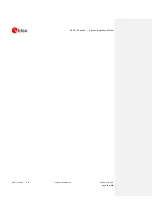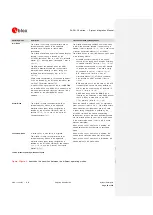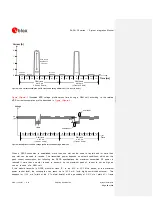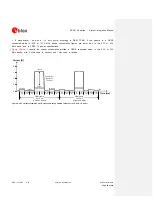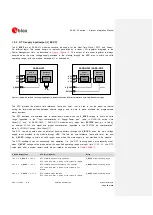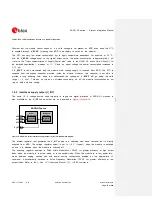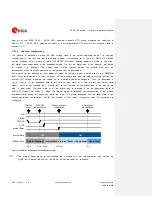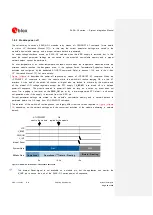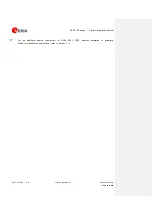
SARA-G3 series - System Integration Manual
UBX-13000995 - R06
Objective Specification
System description
Page 29 of 218
Time [ms]
RX
slot
unused
slot
unused
slot
TX
slot
unused
slot
unused
slot
MON
slot
unused
slot
RX
slot
unused
slot
unused
slot
TX
slot
unused
slot
unused
slot
MON
slot
unused
slot
GSM frame
4.615 ms
(1 frame = 8 slots)
Current [A]
200 mA
60-120 mA
1900 mA
Peak current
depends on
TX power
GSM frame
4.615 ms
(1 frame = 8 slots)
1.5
1.0
0.5
0.0
2.0
60-120 mA
10-40 mA
Figure 4: VCC current consumption profile versus time during a GSM call (1 TX slot, 1 RX slot)
VCC
voltage profile versus time during a GSM call, according to the relative
VCC
current consumption profile described in
Time
undershoot
overshoot
ripple
drop
Voltage
3.8 V
(typ)
RX
slot
unused
slot
unused
slot
TX
slot
unused
slot
unused
slot
MON
slot
unused
slot
RX
slot
unused
slot
unused
slot
TX
slot
unused
slot
unused
slot
MON
slot
unused
slot
GSM frame
4.615 ms
(1 frame = 8 slots)
GSM frame
4.615 ms
(1 frame = 8 slots)
Figure 5: Description of the VCC voltage profile versus time during a GSM call
When a GPRS connection is established, more than one slot can be used to transmit and/or more than
one slot can be used to receive. The transmitted power depends on network conditions, which set the
peak current consumption, but following the GPRS specifications the maximum transmitted RF power is
reduced if more than one slot is used to transmit, so the maximum peak of current is not as high as
can be in case of a GSM call.
If the module transmits in GPRS multi-slot class 10, in the 850 or 900 MHz bands, at the maximum
power control level, the consumption can reach up to 1600 mA (with highly unmatched antenna). This
happens for 1.154 ms (width of the 2 Tx slots/bursts) with a periodicity of 4.615 ms (width of 1 frame

